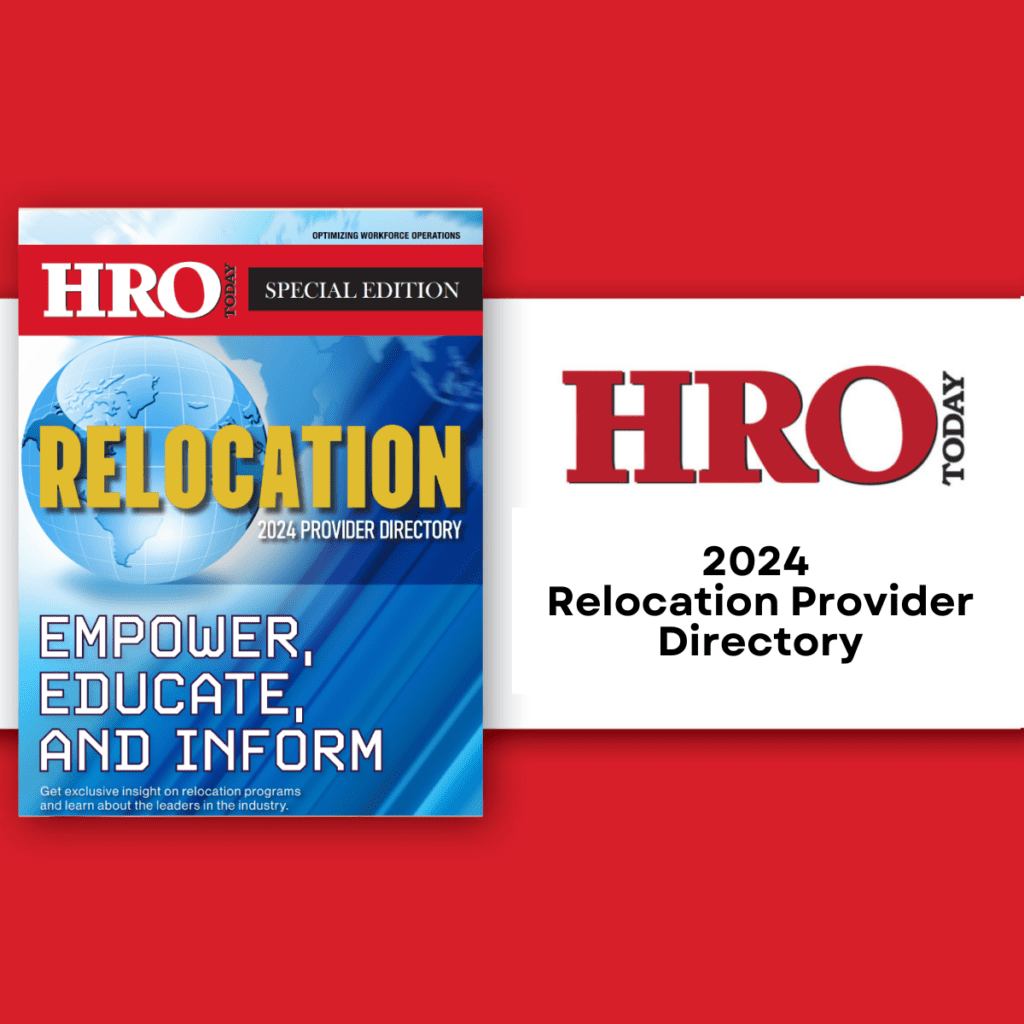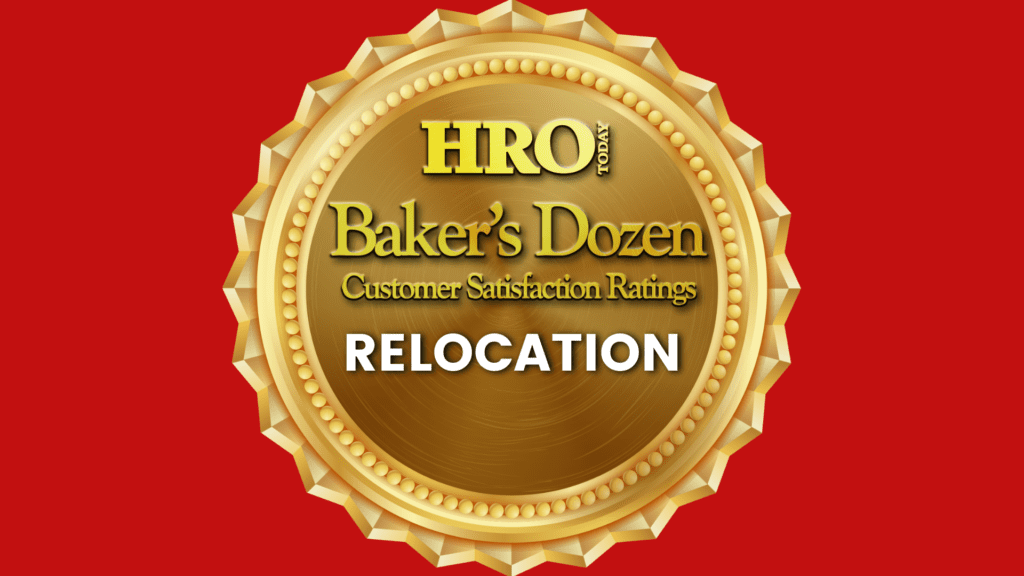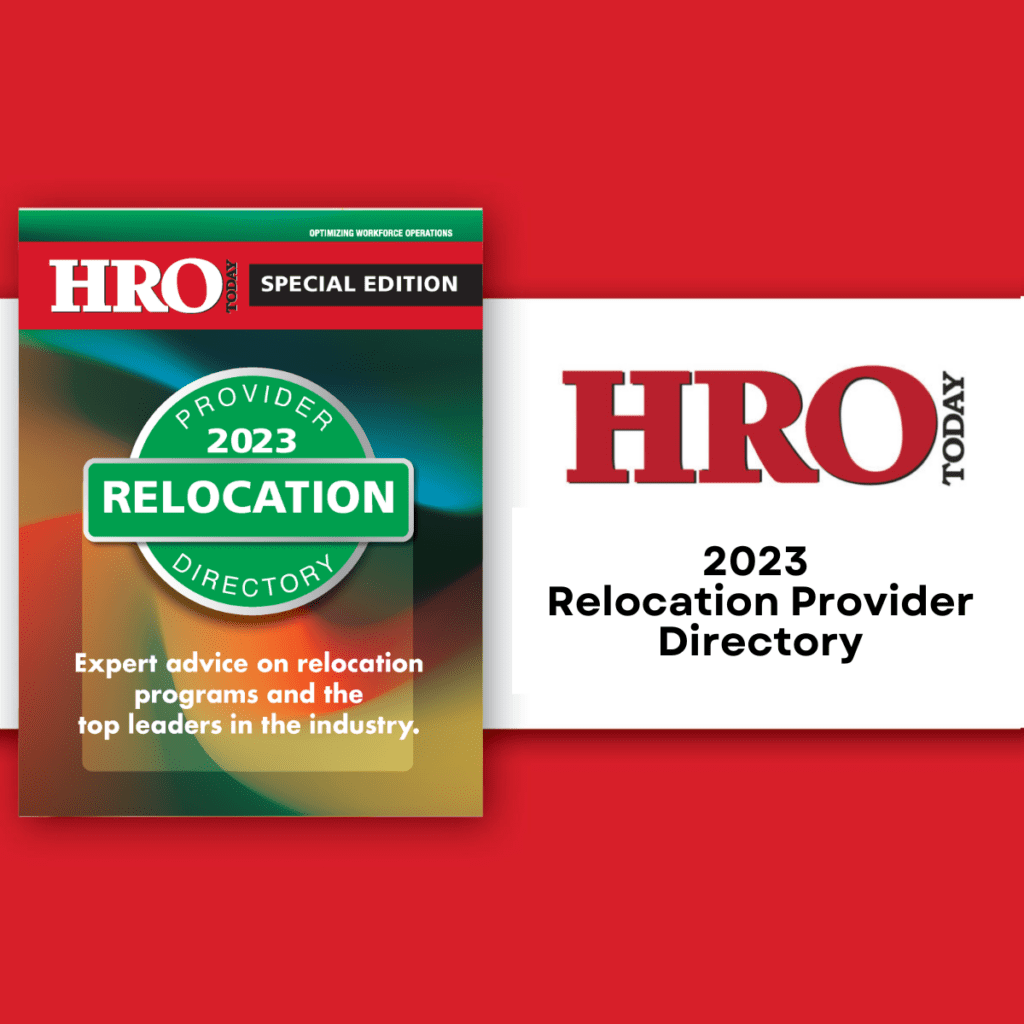
By Russ Banham
In today’s high stakes talent recruitment environment, encouraging skilled people to pull up roots and relocate to a new geographic area is fraught with emotion. If the transferee’s experience is unpleasant, this may linger as a sign of the employer’s inferior treatment of employees, breeding disengagement and unproductiveness.
These risks explain why many organizations, particularly those without the resources to staff an internal relocation team of experts, often turn to third-party service providers to handle the complex moves. But is there financial value in outsourcing relocation services versus doing it in-house? Is there a quantifiable return on the investment? And are there specific metrics allowing the comparison of one provider’s service to another?
These questions illuminate a problem that both buyers and providers of mobility services solutions routinely confront -the difficulty boiling down the value of outsourcing relocation to useful metrics. While providers of recruitment outsourcing services have at their disposal such metrics as “time to fill” to prove their worth to current and prospective clients, mobility outsourcing providers lack such handy calling cards. So what do HR practice leaders do when it comes to arguing the value of outsourcing relocation services to the office of finance?
While some metrics like employee retention rates may provide an indication of value, many other factors are involved in this measurement, making it a less than reliable determinant of actual worth. Metrics for employee engagement and succession management introduce the same dubiety.
“The metrics (for relocation services) are still very gray,” concedes Kelly West, vice president and chief operating officer at Xerox Relocation and Assignment Services, a Denver-based mobility solutions provider. “I don’t know anybody in the industry putting actual numbers in front of folks. There’s not a lot out there. This is a service all about nuances and broader talent management.”
Paul A. Sorrentino, vice president of corporate partnerships at NuCompass Mobility Services Inc., shares this view. “While many companies express an interest in measuring ROI [return on investment] for relocations or assignments, most don’t because they haven’t found a consistent way to do so,” he explains. “Each relocation or assignment is unique in terms of the employee who has been selected, the costs associated with a particular move or assignment, the nature of the move or assignment, and the goals.”
Service By Service
The providers make some good points. Without the ability to quantify the overall value of investing in relocation services, buyers must instead qualify the opportunities. In this regard, there is plenty to crow about.
Take the case of BOK Financial Corp., a Tulsa, Oklahoma- based holding company for seven regional bank brands. Ten years ago, Jeff Reid was hired to create the organization’s talent acquisition department from scratch. The charge before him was to locate specific skill sets at major financial institutions, which were mostly located in large U.S. cities, then encourage these individuals to relocate to Tulsa.
“Relocation was the primary means for us to be successful -that’s how strategic it was,” says Reid, BOK senior vice president and senior HR business partner.
The company could not afford to make mistakes when relocating a skilled transferee; otherwise it would risk disengaging the new employee and increase turnover. Another key consideration was overall expense. Reid was concerned about the company’s lack of an efficient, organized approach to relocation with the ability to have all the components of mobility within a single system.
“There was no way for me to easily learn if we had just hired someone for $50,000 a year and given him or her a $100,000 relocation package, and hired someone else at the same salary and provided a much lesser package,” he says. “We didn’t have a formal policy.”
There were no rules per se on the different levels of relocation services. While a standard move involves reimbursing or fronting the expenses for transportation of households goods from one point to another, as well as paying the closing costs on the sale of the former home and the new home, and picking up incidental costs like those related to house hunting trips or temporary living expenses, nothing was written down governing the financial appropriateness. “Each relocation was based on how well you negotiated the deal with the particular provider, such as the company moving the household items,” Reid explains.
There were other drawbacks to the lack of a formal policy. The Internal Revenue Service permits certain reimbursement transactions involving the sale of a home to be non-taxable via a buyer value option (BVO). This complicated rule can save companies tens of thousands of dollars in some cases, assuming the processes and documentation are accurate. Until BOK Financial engaged relocation and mobility services provider Graebel Companies Inc., “We weren’t garnering these savings in past,” Reid says. “We just didn’t have the resources here to do it.”
It’s All Talent Management
BVO financial opportunities are just one of the many benefits of handing over the risk-intensive process of relocation to a specialist provider. While specific industry metrics are problematic, many providers will estimate the cost of each relocation or new geographic assignment, based largely on historical data to forecast the potential expenses.
Just as important as cost reduction is the transferee’s experience, which affects overall retention. Specialist providers pursue a highly personalized approach in their interactions with employees to enhance the experience. “Relocation is really the first point at which a new employee comes in contact with the new employer,” says West. “The employee’s experience is indicative of how the new employer treats and appreciates its workforce.”
Other providers agree that if a company’s relocation policy is not sufficient or easy to understand, the initial experience for the employee may come across as negative. “This may set the tone for how they feel about the company and ultimately his or her success,” says Ron Dunlap, Graebel’s chief operating officer. “We provide face-to-face consultations to help employees quickly assimilate into their new positions.”
Even current employees sent on long-term assignments learn buckets about the employer’s regard for where they fit in the overall scheme of the organization, and their prospects for career promotions. “The threat of losing talented employees because of a botched workforce mobility assignment looms large for employers,” says Sorrentino.
The value of the transferee’s experience is just as important -if not more so -than the expensive savings accrued by outsourcing.
“If someone came to us and said they wanted to save money on relocation, `can you help us?’ I’d say sure,” says West. “I can show them where they are losing money now because of gaps in their internal program, and provide examples of where we can negotiate better deals on the supply chain side or help with a tax-protected home sale program. But the more important part of what we do is ensuring that mobility and relocation are positive experiences for the transferee.”
Facts and Figures
Another value-added service provided by the specialist firms is helping employers know beforehand whether or not the experiences of the transferee or new employee will be positive. In this regard, the provider should be aligned closely with talent management objectives.
“Bob might be the right person to hire or to send to Lusaka, Zambia, but does Bob’s family want to go there?” West says. “For a global assignment that can cost somewhere in the neighborhood of $1 million over the span of the assignment, you don’t want to take any chances. … We do the background work to ensure the fit is proper and the risks of a bad experience are reduced or mitigated.”
Global Mobility Solutions, for instance, considers its pre-decision services to be vital to the success of employee mobility. “You’re asking someone to uproot and move to Miami, and now the person has all sorts of questions in mind -what is the housing market like there, the people, the schools, the weather and whether or not there is a local Little League for their daughter who plays baseball,” says Steven Wester, president of Scottsdale, Arizona-based Global Mobility. “At the same time, they’re wondering if they can afford to sell their existing homes in the current market environment.”
To help answer these questions before they rear, the firm provides the employee with informational material on the destination. “Now when they fly home from Miami, they’re prepared to have an informed conversation with the spouse about the job and the city,” Wester says. “The anxiety levels are reduced.”
There is one way that providers and buyers can quantify the ROI on relocation services outsourcing -through individual success stories. Reid, for instance, cites significant reductions in temporary housing costs for BOK Financial. The company typically provides transferees with 90 days of free, temporary housing in the new location, as the employee hunts for a house. Given the challenge of finding exactly the right house, some employees literally dwell beyond the deadline.
This created an employee relations dilemma as much as an expense issue for the organization. “You don’t want to tell a transferee they have a week left before you need to kick them out,” Reid explains.
The company’s outsourcing partner advised an incentive- based solution. Transferees are now given three options to choose from: Reside in temporary housing for 30 days and receive a certain amount of money; skip temporary housing altogether and receive a larger sum of money; or reside in the temporary housing for the full 90 days. According to Reid, more than 90 percent of transferees pick option number two.
Other success stories will be familiar to anyone who has ever moved “lock, stock and barrel” to a distant geographic location. Mobility services providers are deft when it comes to knowing the true costs of a move, such as the actual expense of crating up big screen TVs or the actual market value of a home. At their disposal is all that historical data, drawn from thousands of customers over many years of service.
“There is a danger in trying to put everybody in one box; rather, it makes more sense to show a prospective client how you helped an extant client do this or that,” says West.
Sorrentino agrees: “The buzzword in the industry is ROI, but ROI as it relates to each individual move.”
Unfortunately this does not solve the difficulty in comparing the services of one provider versus another.
There are no industry benchmarks, although mobility specialists expect these will be forthcoming as they collect and analyze customer data in the cloud. One possible solution is to ask providers if they have taken surveys on client transferee satisfaction rates. There is a downside to this scenario: The reliability of survey data culled from any organization trying to sell its wares is dubious, rendering provider comparisons questionable. A better test of potential partners is cultural fit and breadth of services.
What remains unquestioned is the value of outsourcing mobility services versus doing it in-house. To do it right – to ensure top-notch transferee experiences at the lowest costs -requires significant resources that might be put to better use elsewhere.
Such is the value of outsourcing that the global mobility manager at Avery Dennison presides over the materials packaging company’s domestic relocation program from The Netherlands. “I’m the only one managing the program so I needed a provider that would support me in the U.S.,” says Jackie Blais, who was relocated herself three years ago to Leiden, Holland.
“Our mobility solutions provider (Graebel) is my third arm and an extension of the company,” she adds. “I don’t nearly have enough resources to do it all myself. I’d need a half dozen people to do what they do, and they would still do it better. We put an enormous amount of trust in them.”
There’s no better metric than that.
Russ Banham can be reached at www.russbanham.com.
What to Look For
Return-on-investment metrics for relocation continue to be difficult to quantify. Industry experts suggest a few ways to navigate the value of mobility programs:
- Consider the savings allotted by the IRS through reimbursements with a buyer value option program.
- Providers often have the ability to anticipate relocation costs based on historical data.
- Leverage third-party assistance in order to earn cost savings from the supply chain.
- Pre-decision services can encourage an easy transfer and a happy, retained employee.














